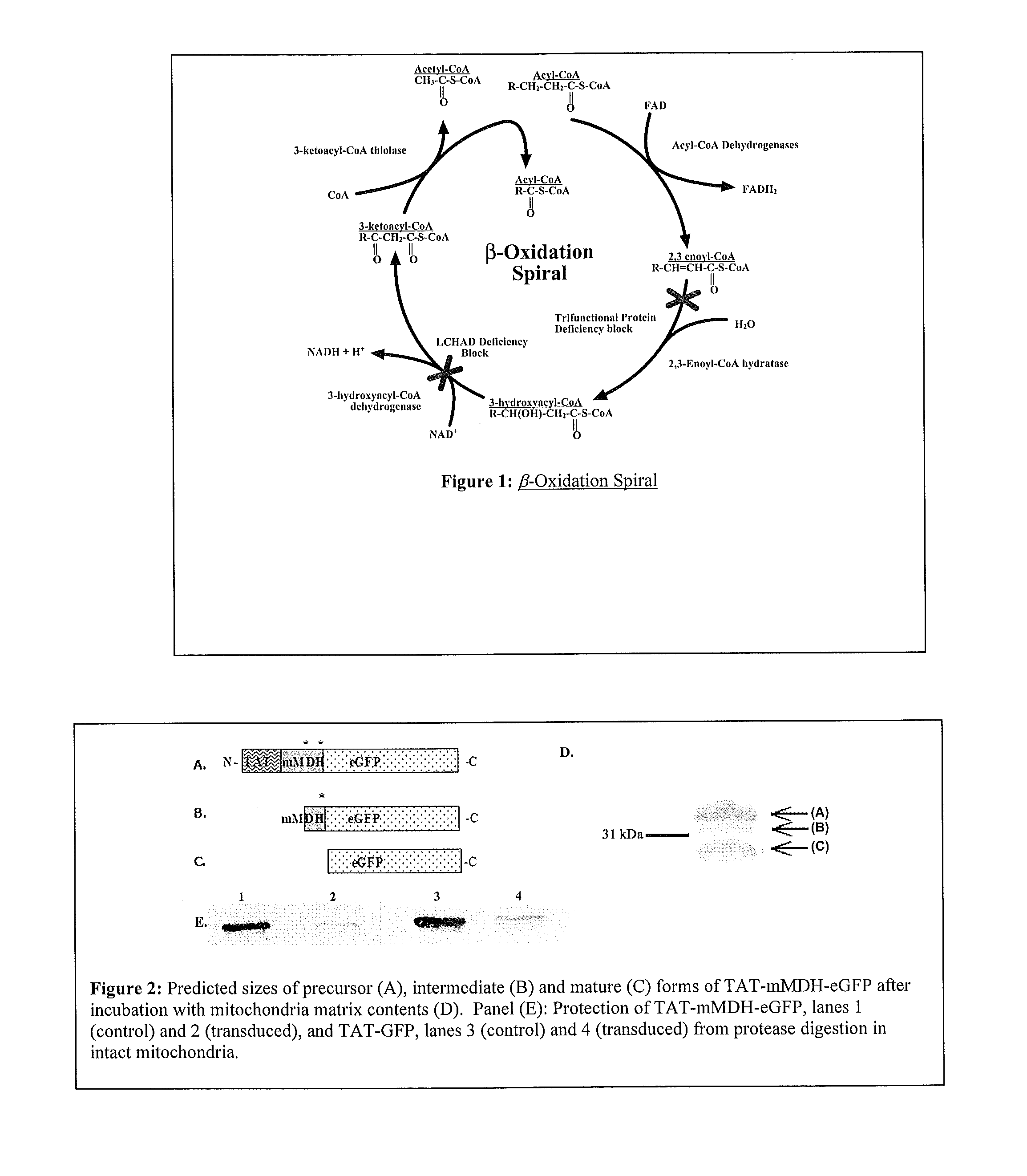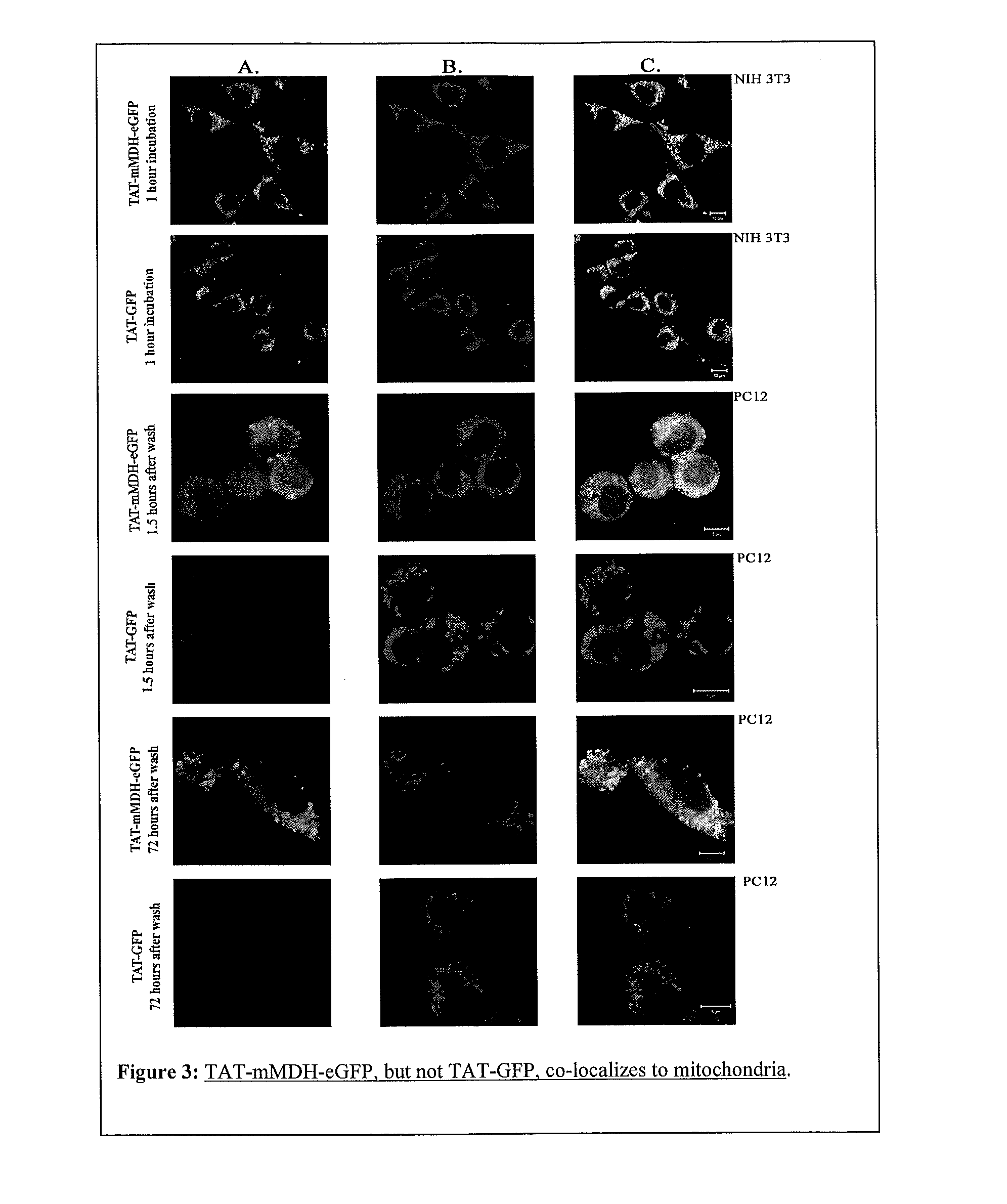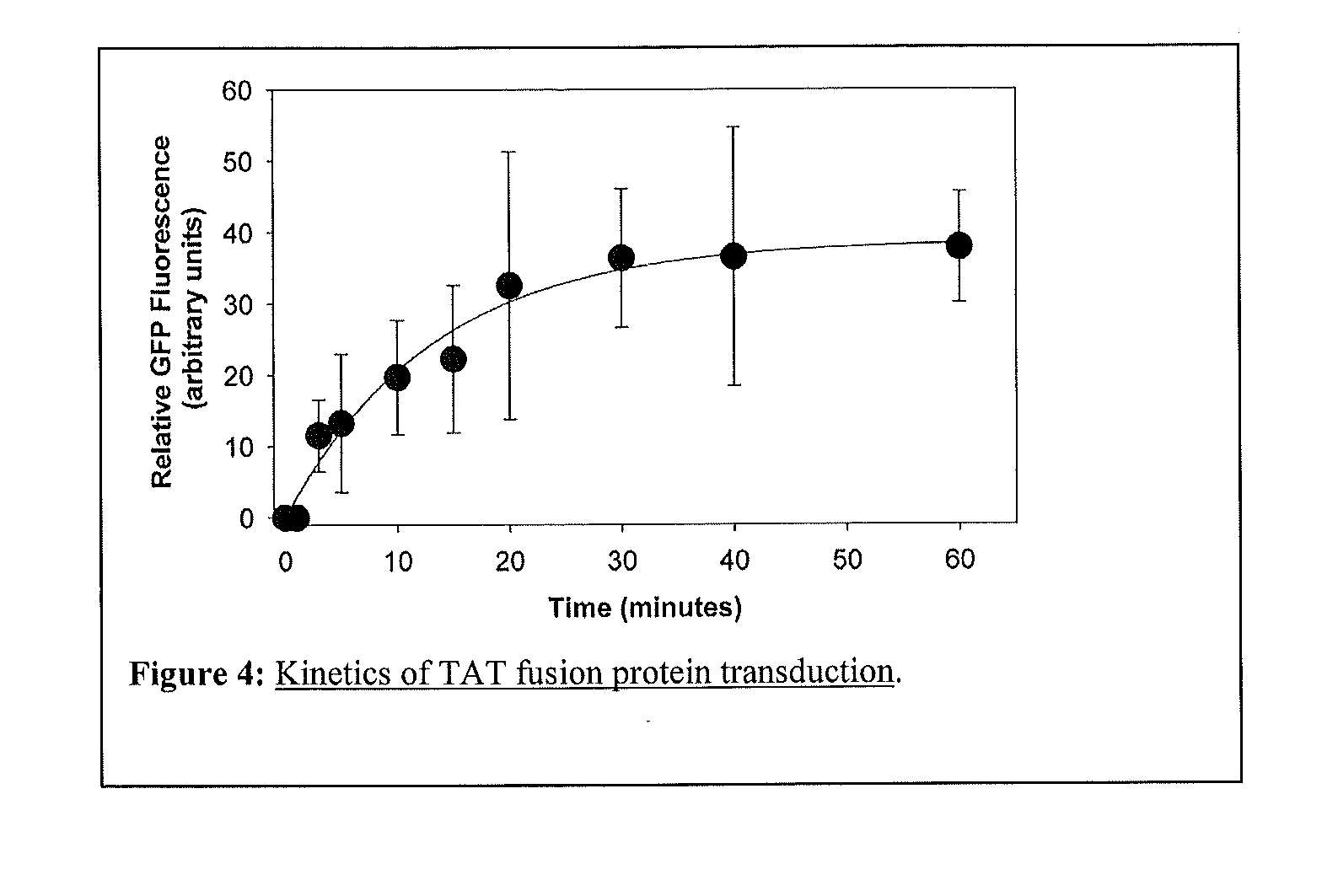Non-Viral Delivery of Compounds to Mitochondria
a technology of mitochondria and compounds, applied in the field of compounds for the delivery of compounds, can solve the problems of poor transfection rate, risk of death in patients, and virus-mediated gene transfer
- Summary
- Abstract
- Description
- Claims
- Application Information
AI Technical Summary
Benefits of technology
Problems solved by technology
Method used
Image
Examples
example 1
Trifunctional Protein Conjugates for the Treatment of Mitochondrial Trifunctional Protein Deficiency
[0083]A. TAT-mMDH-eGFP
[0084]A fusion protein was constructed using the TAT region from the HIV virus, a mitochondrial targeting leader peptide, and a reporter protein (green fluorescent protein, GFP) (FIG. 2A) (S. Schwarze, et al., Science 285:1569-1572 (1999)). A second fusion protein was constructed that included a mitochondrial targeting sequence (MTS), mitochondrial malate dehydrogenase (mMDH), within the TAT-fusion protein in addition to the mitochondrial targeting leader peptide and reporter protein. The transduction of TAT-mMDH-eGFP was compared to that of TAT-GFP (a TAT-fusion protein that does not contain a MTS) into isolated mitochondria, NIH 3T3, and differentiated PC12 cells in culture, and multiple tissues of adult and pregnant mice. These proteins transversed both the cell membrane and mitochondrial membranes, and crossed the placenta into the fetus as well. While the me...
example 2
Frataxin Conjugates for the Treatment of Freidreich's Ataxia
[0124]Defects in mitochondrial function are common in human health and disease. Because mitochondria have only a small genome, ˜16 kb, they must import most of the hundreds of proteins needed for their function from nuclear-encoded genes. Defects in these imported proteins are frequent causes of disease and metabolic disorders. Friedreich's Ataxia (FA) is one such disease and is the most common autosomal recessive ataxia. FA is caused by lack of the nuclear-encoded, mitochondrially targeted protein, Frataxin. FA is caused by a large expansion of a GAA triplet-repeat sequence in the first intron of the Frataxin gene leading to decreased transcription of full-length transcripts (elongation is inhibited) (P. Patel and G. Isaya, Am. J. Hum. Genet. 69:15-24 (2001)). The result being that Frataxin protein is severely deficient leading to progressive iron accumulation and dysfunction in mitochondria (O. Gakh, et al., Biochemistry....
PUM
| Property | Measurement | Unit |
|---|---|---|
| molecular weight | aaaaa | aaaaa |
| length | aaaaa | aaaaa |
| length | aaaaa | aaaaa |
Abstract
Description
Claims
Application Information
 Login to View More
Login to View More - R&D
- Intellectual Property
- Life Sciences
- Materials
- Tech Scout
- Unparalleled Data Quality
- Higher Quality Content
- 60% Fewer Hallucinations
Browse by: Latest US Patents, China's latest patents, Technical Efficacy Thesaurus, Application Domain, Technology Topic, Popular Technical Reports.
© 2025 PatSnap. All rights reserved.Legal|Privacy policy|Modern Slavery Act Transparency Statement|Sitemap|About US| Contact US: help@patsnap.com



